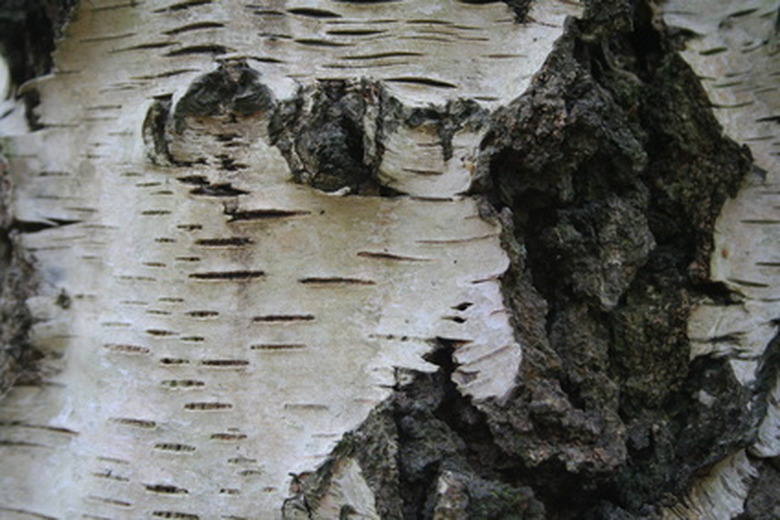Problems With Silver Birch Trees
The silver birch tree (Betula alba) is also called the paper birch and white birch. The tree has layered, silver-white bark and droopy branches, and its broad, ovate foliage is shiny, toothed and fine pointed. The silver birch belongs to the catkin tree family, which means it bears 1- to 2-inch-long male flower clusters and 6-inch-long female clusters. In addition to fungal diseases and insects, the silver birch is also likely to suffer damage from road salt and extended drought.
Birch Leaf Roller
The birch leaf roller (Deporaus betulae) is a 1/4-inch-long beetle that infests silver birch leaves and causes them to wilt and roll. The beetle houses its white larvae inside the rolled-up foliage. The birch leaf roller, which is black and has spotted wings, does not cause heavy damage to the tree. Prevent and control an infestation by removing the rolled-up leaves as soon as they appear. This helps to reduce the spread of the beetles through the tree.
- The silver birch tree (Betula alba) is also called the paper birch and white birch.
- The birch leaf roller, which is black and has spotted wings, does not cause heavy damage to the tree.
Birch Polypore
Birch polypore is caused by a light-brown tree fungus called Piptoporus betulinus. The fungus infects the tree through any wounds and progresses downward to the roots. The fruiting bodies of the fungus have a smooth surface, and the disease makes the tree highly susceptible to breakage. In addition to the silver birch, birch polypore is also likely to infect the downy birch. Preventative measures include the immediate removal of all infected tree parts.
Blushing Bracket
Blushing bracket is a fungal disease caused by Daedaleopsis confragosa. The disease is characterized by the appearance of kidney-shaped, semi-circles of fungal growth attached to the tree. The fungal bodies are about 6 inches and reddish-brown in color. They turn a pinkish-red or "blush" when pressed. The fungal growth appears in tiers on the tree. Controlling the fungus is not considered necessary. Blushing bracket also affects willow and alder trees.
- Birch polypore is caused by a light-brown tree fungus called Piptoporus betulinus.
- The fruiting bodies of the fungus have a smooth surface, and the disease makes the tree highly susceptible to breakage.
Birch Besom
Birch besom is caused by the fungus Taphrina betulina. The disease creates thick, round, distinct bushes resembling a witch's broom in the tree branches. The fungus stays in the tree for many years and continues to create this broom-like growth. The tree is rarely severely damaged and only in cases of heavy infestation. No control is generally used for the disease. Besides the silver birch, the fungus also afflicts downy birch.
